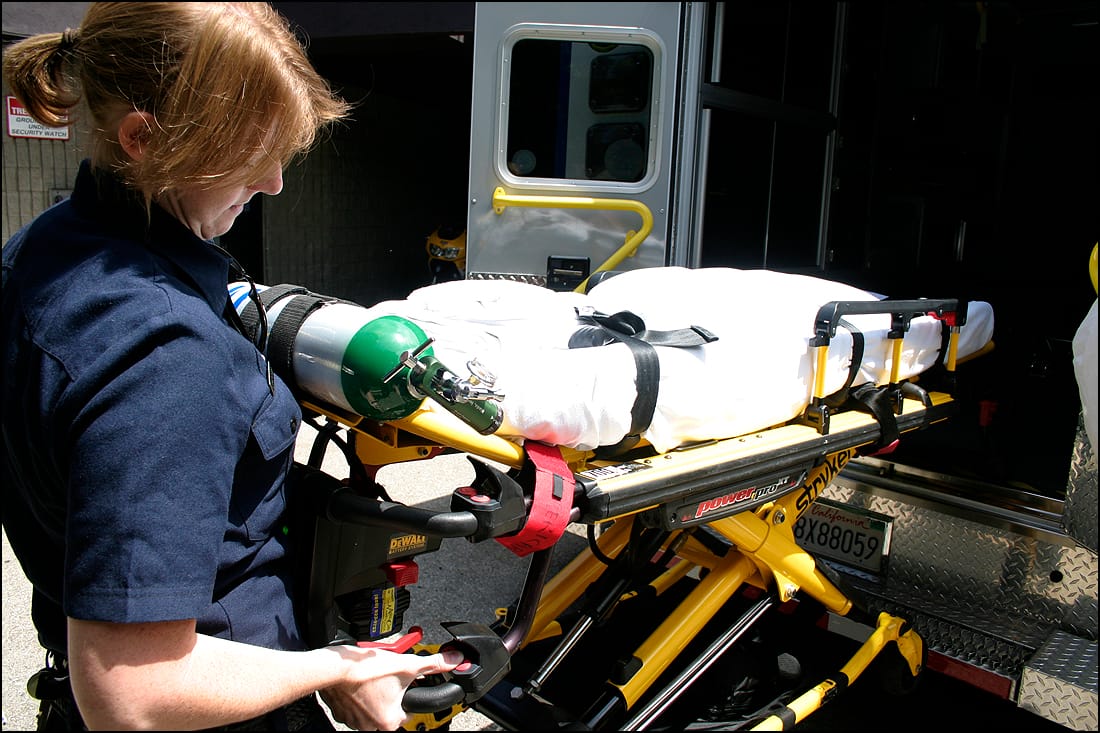
DOWNTOWN — The Santa Monica Fire Department and Santa Monica-UCLA Medical Center are taking a preliminary look at a new partnership that could change the way residents receive care after an injury.
The model, called Community EMS (Emergency Medical Service), would empower emergency medical technicians (EMT) and paramedics to triage patients in the field and choose to bring them to an urgent care-type facility rather than an emergency room.
California law dictates that all 9-1-1 calls involve an emergency room visit, but the concept has been the subject of much attention since the passage of the Patient Protection and Affordable Care Act which puts a premium on cutting out unnecessary hospital costs and preventing return visits for the same conditions.
If allowed, it would mean that a paramedic or EMT would be able to treat someone for a relatively minor condition, like a sprained ankle, without taking them to the emergency room, which is an expensive and time-consuming proposition, said Wally Ghurabi, medical director of the Nethercutt Emergency Center at the Santa Monica-UCLA Medical Center.
That would free up "wall time," or time the ambulances spend waiting to leave a patient without a life-threatening injury with the emergency room.
"In Santa Monica we are blessed, we move faster and are more efficient than most places, but there are wall times in Los Angeles that last more than three or four hours," Ghurabi said. "That ambulance is out of commission."
The program would also include a house-call like service in which a medical professional would visit a recently released patient to check on their progress and help them manage their illness before another ambulance ride became necessary.
"We would be utilizing all community resources to prevent that patient from getting ill again or being readmitted to the hospital again within a certain amount of time," Ghurabi said.
It would also provide patients more choices about their own health care, some of which are considerably cheaper than a visit to the emergency room.
Emergency rooms have become the destination for health care for low-income people, many of whom use the hospital because they cannot be turned away, according to a study by the RAND Corporation, a Santa Monica-based think tank.
Four percent of doctors who staff the country's emergency rooms see 28 percent of all acute care visits, half of all the acute care provided to Medicaid and the Children's Health Insurance Program beneficiaries — two programs for low-income individuals — and two-thirds of acute care provided to the uninsured, according to the study.
Not only are the hospitals widely used, they are extremely expensive for the system because roughly 55 percent of emergency services go unpaid.
Other jurisdictions that have already put the program in place have had success, like Salt Lake City, which created two pilot programs at the North Temple Clinic and University Neuropsychiatric Institute.
The Emergency Communication Nurse System uses a trained nurse dispatcher to decide whether or not an ambulance needs to respond to a call, instead sending people to their primary care physicians or making other, less costly arrangements for transportation.
Likewise, the Community Paramedic program allows fire departments and ambulance services to provide non-emergency health care to people without bringing them to a hospital.
The pilot programs in Salt Lake City saved almost $130,000 at the two locations alone, according to a white paper produced on the subject.
Likewise, a community paramedic model in Dallas saved its health care system $1,393,544 in costs, according to the report.
There is some hope that success seen elsewhere could be replicated here, said Fire Chief Scott Ferguson.
"It's the right person, right place, at the right time delivered to the right spot," he said. "The greatest benefit is to the patient. We want to make sure that they're provided with the absolute best possible care in the most efficient and most cost effective manner. That's important to us, and the system now doesn't always afford that."
There is still a long way to go before any such system takes root in Santa Monica.
The legislation around 9-1-1 calls would need to change, or pilot projects like that proposed by local officials would have to be green-lighted to test the system out.
Locally, paramedics and EMTs may need additional training to provide all of the services that would be required of them, and a new clinic may have to be established to provide another location for treatment than the emergency room.
There may also be local resistance that needs to be overcome, like doctors upset at the loss of patients.
It's all a long way off, but could provide benefits to patients, should it get underway, Ghurabi said.
ashley@www.smdp.com

